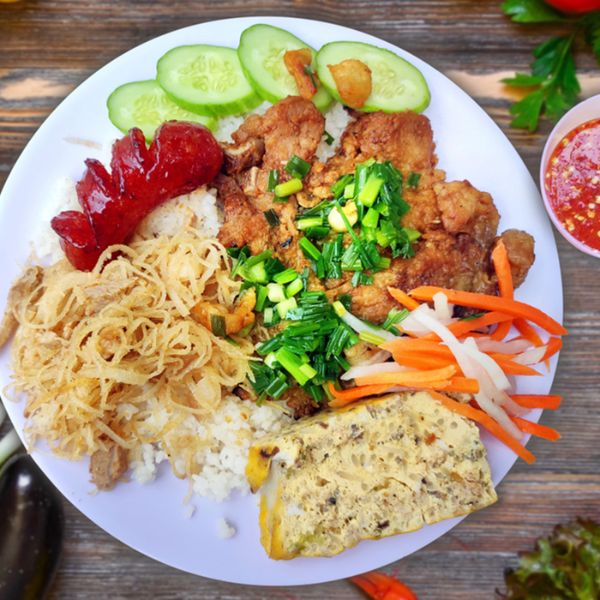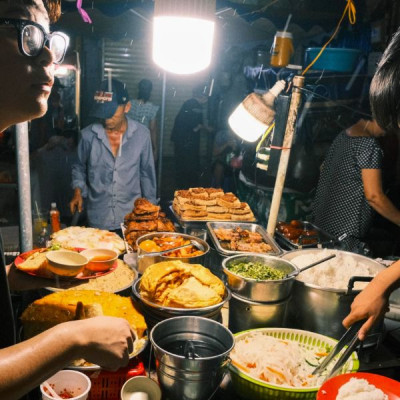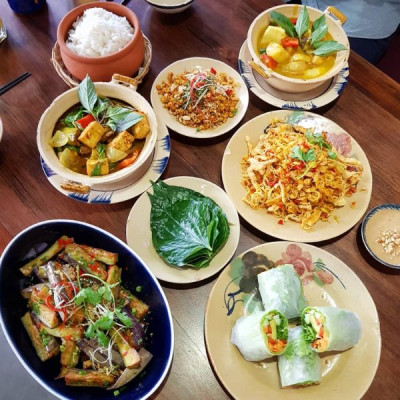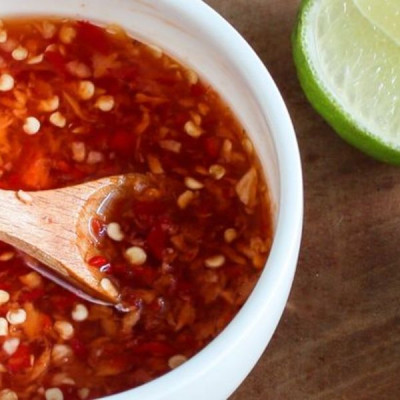1. Introduction: What is Vietnamese Broken Rice (Cơm Tấm)
1.1. Origin and meaning of "broken rice"
Vietnamese broken rice, or "Cơm Tấm," is a traditional dish originating from Southern Vietnam, specifically Ho Chi Minh City (formerly Saigon). The name "Cơm Tấm" refers to the "broken rice" grains that are a result of the milling process, where the rice kernels break during harvesting. This imperfect grain, once deemed inferior, is now a beloved staple in Vietnamese cuisine.
Historically, broken rice was the cheaper alternative, often used by the working class and farmers who couldn't afford the whole grains. Over time, however, this humble dish evolved, gaining recognition for its unique texture and rich flavors. Cơm Tấm is more than just a meal; it represents the resilience and creativity of Vietnamese culture. Today, it has become a symbol of street food excellence, enjoyed by people from all walks of life in bustling Saigon and beyond.
The dish reflects the culinary creativity of the South, with each vendor adding their own twist to the traditional recipe. In Ho Chi Minh City, the aromas of sizzling grilled pork, the vibrant colors of fresh herbs, and the sounds of busy street vendors selling Cơm Tấm create an undeniable connection to local culture and everyday life.
1.2. Why it's a must-try for foodies
Cơm Tấm is not just a dish; it's an experience. For food enthusiasts, it offers a perfect blend of flavors and textures. The broken rice, slightly more fibrous than regular rice, pairs beautifully with the crispy grilled pork, making every bite a harmonious blend of tenderness and crunch. The addition of pickled vegetables, fresh herbs, and a rich fish sauce-based dressing elevates the dish to a level of savory perfection. For first-time eaters, it's a flavor explosion that’s both satisfying and memorable.
When you step into any street-side eatery in Ho Chi Minh City, you'll witness locals and tourists alike savoring their bowls of Cơm Tấm, and it's impossible to resist. The dish captures the essence of Southern Vietnamese street food: quick, delicious, and packed with layers of flavor. It's the kind of dish that stays with you long after your visit, sparking cravings that can't be ignored.
For travelers visiting Vietnam, especially Ho Chi Minh City, trying Cơm Tấm is more than just tasting food; it’s about immersing yourself in the culture. The dish offers a true taste of Vietnamese hospitality, making it one of the must-try items on any traveler's list. Don’t miss out on this iconic meal — it's a quintessential part of the Ho Chi Minh City experience that you’ll be talking about long after your trip. FOMO (Fear of Missing Out) is real — and trust us, you won’t want to leave Vietnam without trying it!
2. What Makes Com Tam So Special

2.1. Signature ingredients
The magic of authentic Vietnamese broken rice lies in its carefully selected ingredients, each of which plays a crucial role in creating the perfect dish. The star of the show is, of course, the broken rice itself, known for its slightly uneven, rough texture that gives each bite a satisfying chewiness. It's the foundation on which all other elements build their flavor profile.
Next comes the grilled pork (sườn nướng), which is marinated with a mix of savory fish sauce, garlic, sugar, and lemongrass, giving it a beautifully smoky, caramelized exterior while keeping the meat juicy and tender on the inside. This is the highlight of the dish, bringing the richness that complements the simplicity of the rice.
Bì, a shredded pork skin mixed with roasted rice powder, adds a unique texture and nutty flavor to the dish. It's light but packed with umami, adding complexity to the overall taste. Chả trứng, or Vietnamese steamed pork and egg patty, is another addition that brings richness and smoothness, creating a perfect contrast with the crispy pork.
An essential part of any Vietnamese broken rice plate is the fried egg (trứng ốp la). Often served sunny-side up, the egg yolk bursts open, adding a creamy texture that mixes beautifully with the rice and grilled meat. Finally, the dish is topped with mỡ hành, or fried scallion oil, which gives it a savory, aromatic finish that ties all the flavors together.
The finishing touch is a drizzle of fish sauce (nước mắm) – a salty-sweet dressing that ties the ingredients together, balancing out the richness of the grilled pork and egg, and adding a touch of tanginess that elevates the dish to a whole new level.
Each component in the best Vietnamese broken rice is carefully selected to create a harmonious balance of flavors and textures. The sweet, salty, and savory elements come together in perfect balance, ensuring that every bite offers something new to savor.
2.2. Flavor explosion & texture harmony
What truly sets Vietnamese broken rice apart from regular rice dishes in Vietnamese cuisine is its explosive flavor and dynamic texture. With every bite, you'll experience a burst of flavors: the richness of the grilled pork, the umami from the fish sauce, the crispiness of the fried egg and shredded pork skin, and the freshness from herbs and pickled vegetables. Each element adds a distinct layer, creating a multi-dimensional taste that lingers on your palate.
The texture of Vietnamese broken rice is also a key factor in its appeal. The broken rice itself offers a satisfying chew, not as soft as regular rice, yet not as hard as some grains. Combined with the tender, juicy pork and crispy fried egg, the dish achieves a perfect harmony of soft, crispy, tender, and juicy textures. This is a far cry from the simpler rice dishes often found in Vietnamese cuisine, which tend to focus primarily on the rice and protein.
In contrast to other common Vietnamese rice dishes like Cơm Gà (chicken rice) or Cơm Tự Nhiên (fried rice), Vietnamese broken rice stands out because it offers a more complex combination of ingredients and flavors. The grilled pork provides a deeper smoky flavor, while the fried egg adds a richness that other rice dishes lack. The freshness from the herbs, pickled vegetables, and the crunch of shredded pork skin give this dish an extra dimension, making it a more vibrant, satisfying meal compared to traditional rice-based dishes.
Vietnamese broken rice is not just a meal – it's a sensory experience. The contrast between each ingredient's flavor and texture makes it a standout dish in Vietnamese cuisine and an absolute must-try for anyone visiting Ho Chi Minh City.
3. How and Where to Enjoy the Best Com Tam

3.1. Eating like a local
To truly appreciate Vietnamese broken rice flavor, you need to eat it like a local. First, the most essential step: pour the fish sauce (nước mắm) evenly over the dish. This sauce isn’t just for dipping—it’s the soul of the meal, tying together the smoky grilled pork, the soft broken rice, and the rich fried egg into one harmonious bite.
Next, don’t overlook the pickled vegetables and cucumber slices served on the side. These crunchy, tangy additions help balance out the richness of the meat and egg. Add a few fresh herbs or leafy greens, and you’ve got a bite that hits every note: savory, sweet, sour, and fresh.
When should you enjoy Vietnamese broken rice? The beauty of this dish is its versatility—it’s commonly eaten at any time of the day. Many locals kick off their morning with a hearty plate of broken rice, especially with a strong iced coffee. At lunchtime, it's a filling midday option. And by dinnertime, the smoky aroma of grilled pork wafting from street-side stalls is nearly irresistible.
3.2. Top-rated Com Tam spots in Ho Chi Minh City
Ho Chi Minh City is the birthplace and beating heart of Vietnamese broken rice, and it offers countless places to enjoy this dish, from humble sidewalk eateries to well-known local chains. Here are a few must-try spots that consistently receive high praise from both locals and tourists:
Cơm Tấm Ba Ghiền (84 Đặng Văn Ngữ, Phú Nhuận District): Known for its generous portions of grilled pork and signature flavor-packed fish sauce. This is the go-to place for those craving authenticity.
Cơm Tấm Cali (multiple locations): A modern, air-conditioned setting with a wide variety of toppings. While it’s a bit pricier, the clean, comfortable space and consistent quality make it a favorite among travelers.
Cơm Tấm Nguyễn Văn Cừ (74 Nguyễn Văn Cừ, District 1): A no-frills local gem offering fast service and bold flavors. The smoky pork here is a standout, and prices are very affordable.
Each of these places brings its own twist on the classic dish, but they all deliver on the same promise: an unforgettable experience of Vietnam’s street food culture, one delicious bite of Vietnamese broken rice at a time.
4. Cultural Value & Tourist Experience

4.1. Vietnamese broken rice in daily Vietnamese life
Vietnamese broken rice is more than just a dish—it’s a part of the Southern Vietnamese identity. Originating from humble beginnings, this meal was once considered food for the working class, made from fractured rice grains that couldn’t be sold at full price. But over time, it transformed into a beloved comfort food, enjoyed by all walks of life, from street vendors to high-end diners.
In cities like Ho Chi Minh, you’ll find popular Vietnamese broken rice served on street corners, in bustling markets, in air-conditioned restaurants, and even at home. It’s a go-to breakfast, a quick lunch, or a satisfying dinner. Its versatility and deep connection with Southern culture have made it a "national dish" of the South—simple, filling, flavorful, and deeply Vietnamese.
This dish also reflects Vietnamese values: resourcefulness, community, and flavor-first thinking. The way broken rice grains are transformed into a star of the table shows how Vietnamese cuisine celebrates even the simplest ingredients.




